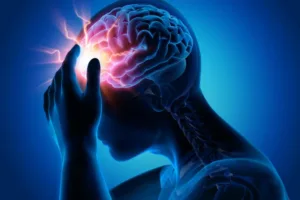What is chronic low back pain?
Chronic lower back pain refers to pain felt in the lower back, and has been persistent for more than 12 weeks. Low back pain is extremely common, with up to 80% of adults experiencing it at least at one point in their lifetimes.
Symptoms of lower back pain include can range from dull aches to stabbing or shooting sensations. Since the pain can interfere with movement or even standing up straight, recurrent back pain episodes can seriously interfere with one’s daily routine and overall quality of life. Chronic low back pain affects men and women equally, and can have an abrupt onset, or develop gradually through the years.
Although surgical procedures can be used to treat chronic low back pain, they are not always successful, and involve a number of risks and a long rehabilitation period. Therefore, surgery should be used as a last resort in treating chronic back pain, and a number of other treatment strategies should be recommended to the patient first.
1. Physical Therapy
Physical therapy is a branch of rehabilitative medicine that uses specific physical exercises and equipment to overcome physical impairments, achieve pain relief and improve physical function. Using physical therapy can be a very effective strategy to treat chronic lower back pain because this type of therapy is aimed not only at treating the pain, but also at finding and eliminating its source.
The physiotherapist typically first determines the areas of weakness or stiffness in the body that impair the biomechanical balance of the body, and prescribe specific exercises to treat these problems, strengthen the targeted muscle groups, and relieve chronic pain.
2. Acupuncture
Acupuncture is a branch of ancient Chinese traditional medicine, and involves the insertion of fine needles into precise points throughout the body. This ancient practice has been growing in popularity as an alternative treatment for pain relief for individuals suffering from different types of chronic pain. It is thought that the insertion of filiform needles produces pain relief by relaxing contracted muscles, and promoting the release of the body’s natural painkillers, such as endorphins and serotonin.
In addition, some researchers believe that stimulating certain nerves using acupuncture can also be effective in reducing inflammation, which often goes hand in hand with chronic pain. Acupuncture is generally considered safe, and can be effective in treating chronic pain.
3. Spinal manipulation and mobilization
Spinal manipulation and mobilization approaches are typically used by licensed practitioners, such as chiropractors, to treat chronic lower back pain by manually adjusting, mobilizing, massaging or stimulating the spine, as well as muscles and other adjacent tissues in the lower back. Chiropractic care is typically used to treat muscoskeletal conditions involving the bones, muscles, ligaments, tendons and cartilage.
Spinal manipulation and chiropractic care are generally considered to be safe and a potentially effective option to relieve back pain. However, individuals with chronic back pain due to osteoporosis and spinal cord compression should not receive spinal manipulation. According to research studies, chiropractic interventions can be an effective strategy to provide some pain relief for chronic low back pain.
4. Nerve block therapies
Injection-based nerve block therapies are used to treat chronic back pain by blocking nerve conduction from specific points of the body by injection of local anesthetics, botulism toxin, and steroids into the soft tissues of the affected area. This type of therapy is typically effective in achieving relief from chronic back pain.
In addition, nerve block therapies can be useful tool in identifying the anatomical cause of the chronic lower back pain. Although nerve block therapies are typically not recommended for long-term use, they can be an effective short-term treatment to relieve chronic low back pain and to help the patient be more mobile to perform stabilizing exercises.
5. Biofeedback
Biofeedback is an alternative therapy which is typically used in conjunction with other approaches and is aimed to help the individual suffering from chronic pain to self-regulate and influence their pain perception. A biofeedback session involves monitoring the patient’s vital signs, such as heart rate, breathing rate and blood pressure, as well as skin temperature, muscle activity and sweating using electrodes which are placed on the skin and connected to a monitor.
A biofeedback therapist helps the patient to perform relaxation exercises, including deep breathing, guided imagery and progressive muscle relaxation. The goal of biofeedback therapy is to help the patient gain awareness of his or her body functions, and to learn to control the perception of pain. When used to treat chronic low back pain, biofeedback is used to help the individual identify tight muscles and learn to relax them. A recent scientific review study has found that biofeedback treatment can be effective in chronic back pain treatment, both in the short-term and long term, when used alone and in combination with other therapies.
6. Transcutaneous electrical nerve stimulation (TENS)
This type of non-pharmacological therapy involves wearing a battery-powered device with electrodes that attach to the skin that are placed on the areas of the body causing chronic pain. The TENS device generates electrical impulses which are designed to block the incoming pain symptoms which arise from the peripheral nerves.
TENS is considered to be a safe alternative to medications used to treat chronic back pain, which can result in side effects. Recent studies have demonstrated that TENS can be an effective treatment for significantly reducing pain in individuals suffering from chronic low back pain.
7. Mindfulness and Meditation
Since chronic pain can also cause psychological and emotional suffering, various mindfulness and meditation techniques can be used to achieve relaxation and decrease the levels of stress associated with the pain. As part of this alternative therapy, various approaches, ranging from yoga, meditation and relaxation techniques, and cognitive therapy, are used to help the individual to focus the mind to decrease the perception of pain.
Scientific research evaluating the effectiveness of mindfulness in treating chronic low back pain has revealed that it can be successfully used to achieve pain reduction and improve the overall quality of life.


















